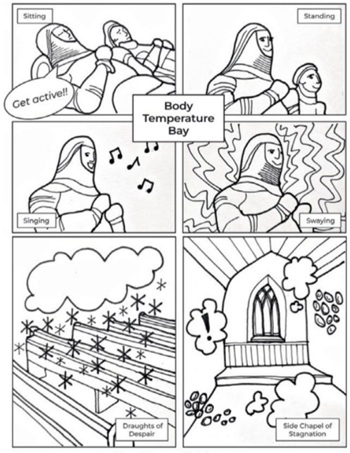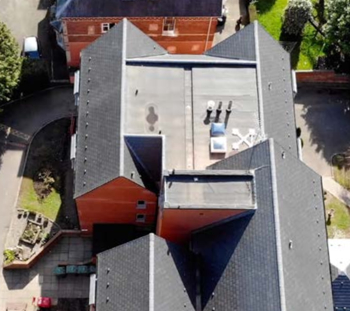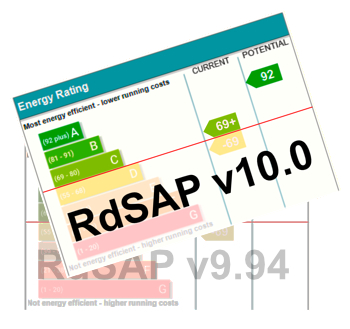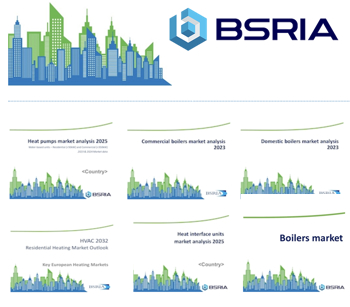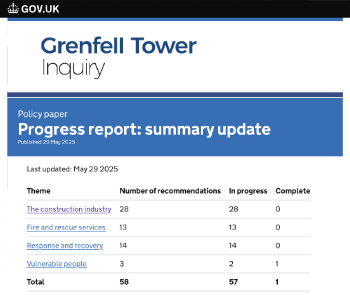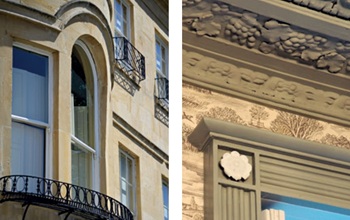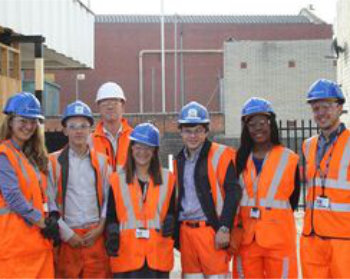Area
The term ‘area’ generally refers to a two-dimensional extent or measurement of land or some other surface, or part of a region. Typically, it is used to measure the two-dimensional surface of a three-dimensional object, i.e. a building.
Squares of a fixed size are used to measure the area of a shape, and as per the International System of Units (SI), the standard unit of area is the square metre (m2 or sq. m). The square metre measurement indicates the area contained within a square whose sides are all 1 m long.
In terms of buildings, area is commonly measured and referred to in relation to the two-dimensional space of a floor or wall. For example, it is used to calculate the amount of paint that would be required to cover a wall surface (with a single coat of a given thickness), or the amount of carpet that would be required to cover a floor surface.
The Building Regulations define floor area as ‘...the aggregate area of every floor in a building or extension, calculated by reference to the finished internal faces of the walls enclosing the area, or if at any point there is no such wall, by reference to the outermost edge of the floor.’
The area of a building can be measured in a number of different ways:
- Gross external area (GEA): the whole area of a building taking each floor into account, including perimeter walls.
- Gross internal area (GIA): the area of a building measured to the internal face of the perimeter walls at each floor level. (Also known as the total useful floor area.)
- Net internal area (NIA): the usable area measured to the internal finish of the perimeter or party walls at each floor level.
The floor area ratio (FAR), also known as the plot ratio, is a measure of the total permitted floor area of a building, in relation to the total area of the plot on which the building stands. A higher ratio indicates a higher-density.
Area can also refer to different places and spaces within a building. For example, an ancillary area of a building is an area that supports the function/s of the primary areas, that is, it is not part of the primary purpose of the building, but is required in order that the primary purpose can function. The term ‘common area’ refers to areas and amenities which are provided for the common use of more than one person.
Designing Buildings has a range of articles about different types of area, including:
- Area of outstanding natural beauty
- Coastal change management area
- Conservation area
- Covered area
- Designated area
- Edge of centre
- Enterprise zone.
- How to fit carpet.
- Mineral safeguarding area
- Nature improvement area
- Open space
- Opportunity Area Planning Framework (OAPF)
- Primary shopping area.
- Public space.
- Site area
- Special areas of conservation.
- Town centre.
- Types of room.
- Unprotected area.
[edit] Related articles on Designing Buildings
- Conversion of material volumes.
- Cubic metre.
- Effective Floor Area.
- Floor area ratio.
- Gross external area.
- Gross internal area.
- How to take off construction works.
- International Property Measurement Standards.
- Land.
- Measurement.
- Measurement of existing buildings.
- Metric system.
- Net internal area.
- Place.
- Region.
- Space.
- Size.
- Territory.
- Types of land.
- Units.
- Volume.
Featured articles and news
Professional practical experience for Architects in training
The long process to transform the nature of education and professional practical experience in the Architecture profession following recent reports.
A people-first approach to retrofit
Moving away from the destructive paradigm of fabric-first.
International Electrician Day, 10 June 2025
Celebrating the role of electrical engineers from André-Marie Amperè, today and for the future.
New guide for clients launched at Houses of Parliament
'There has never been a more important time for clients to step up and ...ask the right questions'
The impact of recycled slate tiles
Innovation across the decades.
EPC changes for existing buildings
Changes and their context as the new RdSAP methodology comes into use from 15 June.
Skills England publishes Sector skills needs assessments
Priority areas relating to the built environment highlighted and described in brief.
BSRIA HVAC Market Watch - May 2025 Edition
Heat Pump Market Outlook: Policy, Performance & Refrigerant Trends for 2025–2028.
Committing to EDI in construction with CIOB
Built Environment professional bodies deepen commitment to EDI with two new signatories: CIAT and CICES.
Government Grenfell progress report at a glance
Line by line recomendation overview, with links to more details.
An engaging and lively review of his professional life.
Sustainable heating for listed buildings
A problem that needs to be approached intelligently.
50th Golden anniversary ECA Edmundson apprentice award
Deadline for entries has been extended to Friday 27 June, so don't miss out!
CIAT at the London Festival of Architecture
Designing for Everyone: Breaking Barriers in Inclusive Architecture.
Mixed reactions to apprenticeship and skills reform 2025
A 'welcome shift' for some and a 'backwards step' for others.








